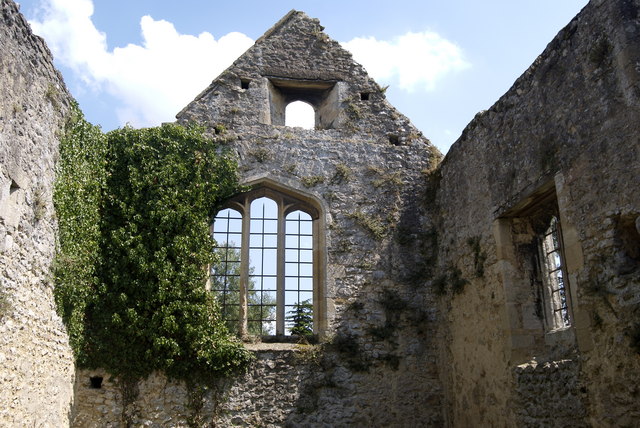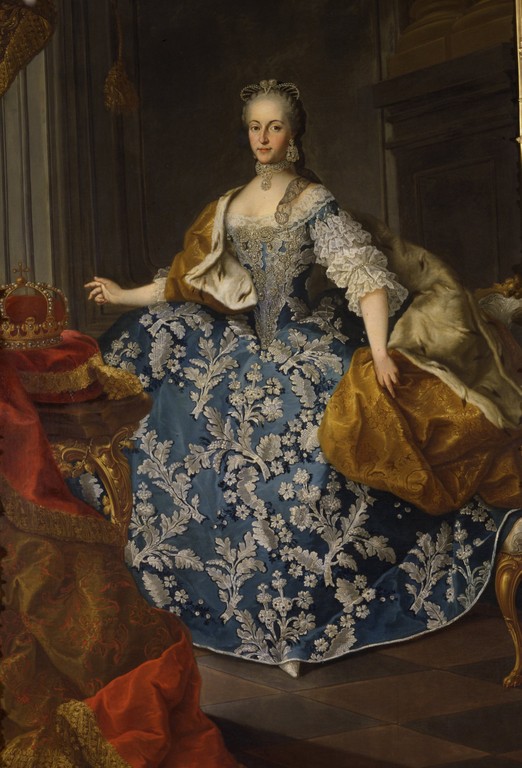by Susan Flantzer
© Unofficial Royalty 2024
Wales was divided into a number of separate kingdoms. The largest of these was Gwynedd in northwest Wales and Powys in east Wales. Gwynedd was the most powerful of the Welsh kingdoms. For one man to rule all of Wales during this period was rare. This was because of the inheritance system practiced in Wales. All sons received an equal share of their father’s property, including illegitimate sons, resulting in the division of territories.
The Principality of Wales was created in 1216 at the Council of Aberdyfi when it was agreed by Llywelyn the Great and the other Welsh princes that he was the paramount Welsh ruler and the other Welsh princes would pay homage to him. Although he never used the title, Llywelyn was the de facto Prince of Wales. Llywelyn dominated Wales for 45 years and was one of only two Welsh rulers to be called “the Great”, the other being his ancestor Rhodri the Great. Llywelyn was succeeded by his son Dafydd ap Llywelyn and then by his two grandsons who were the sons of his illegitimate son Gruffydd ap Llywelyn.
The campaign of King Edward I of England in Wales (1276 – 1284) resulted in Wales being completely taken over by England. It ended with the deaths of the last two native Princes of Wales: Llywelyn ap Gruffudd who was ambushed and killed in 1282 and his brother Dafydd ap Gruffydd, who was the first prominent person in recorded history to have been hanged, drawn, and quartered, in 1283. To ensure there would be no further members of the House of Aberffraw, the English imprisoned Dafydd ap Gruffydd’s two young sons for the rest of their lives at Bristol Castle and sent his daughter and the daughter of his brother Llywelyn ap Gruffydd to convents. To further humiliate the Welsh, King Edward I invested his son and heir, the future King Edward II, with the title Prince of Wales. Since then, the title has been granted (with a few exceptions) to the heir apparent of the English or British monarch.
*********************

Alexander III, King of Scots (on the left) with Llywelyn, Prince of Wales (on the right) as guests of King Edward I of England (in the middle) at the sitting of an English parliament; Credit – Wikipedia
Note: In Welsh, “ap” means “son of” and “ferch” means “daughter of”.
Llywelyn ap Gruffydd, also known as Llywelyn the Last, was born circa April 1228 in the Principality of Gwynedd, now in Wales. He was the second son of Gruffydd ap Llywelyn and Senana ferch Caradog. Llewelyn’s paternal grandparents were Llywelyn ap Iorwerth, Prince of Gwynedd, also known as Llywelyn Fawr (Llywelyn the Great), and his mistress Tangwystl ferch Llywarch Goch. His maternal grandparents were Caradog ap Membyr Ddu and Eva ferch Gwyn.
Llywelyn had three brothers and three sisters. Information on his siblings is sketchy, including birth and death dates and marriage information.
- Margred ferch Gruffydd (1221 – 1261), married Madog II ap Gruffydd, Lord of Dinas Branof Powys Fadog, had two sons
- Owain Goch ap Gruffydd (circa 1225 – circa 1282)
- Rhodri ap Gruffydd (circa 1230 – 1235 to circa 1315), married (1) Beatrice, daughter of David of Malpas (2) Unknown, had one son
- Dafydd ap Gruffydd, Prince of Gwynedd (1238 – 1283), married Elizabeth Ferrers, had two sons and one daughter
- Gwladys ferch Gruffydd (circa 1225 – 1261), half-sister, married Rhys Fychan
- Catrin ferch Gruffydd (circa 1234 – ?), a half-sister, married Iorwerth Fychan ab Iorwerth Hen, had two children
Llywelyn ap Gruffydd’s father Gruffydd ap Llywelyn was the eldest son of Llywelyn the Great. Even though Gruffydd ap Llywelyn was illegitimate, according to Welsh law, all sons received an equal share of their father’s property, including illegitimate sons, resulting in the division of assets. However, Llywelyn the Great wanted his legitimate son Dafydd ap Llywelyn, the son of Llywelyn the Great’s wife Joan, Lady of Wales, an illegitimate daughter of King John of England, to be his sole heir. In 1220, Llywelyn the Great managed to convince Dafydd ap Llywelyn’s maternal uncle King Henry III of England to recognize Dafydd as his sole heir, and in 1226, Pope Honorius III officially declared Llywelyn the Great’s wife Joan to be the legitimate daughter of King John of England, strengthening Dafydd’s position. In 1238, at a council at Ystrad Fflur Abbey, the other Welsh princes recognized Dafydd as Llywelyn’s sole legitimate heir.
Llywelyn the Great on his deathbed with his sons Gruffydd ap Llywelyn and Dafydd ap Llywelyn; Credit – Wikipedia
On April 11, 1240, Llywelyn the Great died and his son Dafydd ap Llywelyn succeeded him as Prince of Gwynedd. In August 1241, King Henry III of England invaded Gwynedd, and after a short war, under the Treaty of Gwerneigron, Dafydd ap Llywelyn was forced to give up all his lands outside Gwynedd and hand over his imprisoned half-brother Gruffydd ap Llywelyn, Llywelyn ap Gruffydd’s father, to King Henry III who imprisoned him in the Tower of London. Since Gruffydd ap Llywelyn was a rival claimant to the Principality of Gwynedd, King Henry III put limits on Dafydd ap Llywelyn by threatening to set up Gruffydd as a rival in Gwynedd. However, on March 1, 1244, Llywelyn ap Gruffydd’s father Gruffydd ap Llywelyn fell to his death while trying to escape from the Tower of London by climbing down a knotted bedsheet.
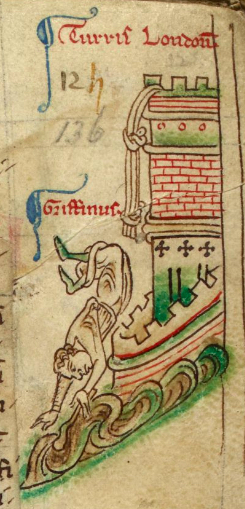
Gruffydd ap Llywelyn falling from the Tower of London; Credit – Wikipedia
Dafydd ap Llywelyn, Prince of Gwynedd and his wife Isabella de Braose had no children. Llywelyn ap Gruffydd was in the entourage of his uncle Dafydd ap Llywelyn and appeared to be his designated heir. However, shortly after Dafydd ap Llywelyn died in 1246, the 1247 Treaty of Woodstock divided Gwynedd between Llywelyn ap Gruffydd, his elder brother Owain ap Gruffydd, and his younger brothers Rhodri ap Gruffydd and Dafydd ap Gruffydd. In 1255, Llywelyn ap Gruffydd defeated his brothers at the Battle of Bryn Derwin and established himself as the sole ruler of Gwynedd. He received the homage of the Welsh princes and assumed the title Prince of Wales. King Henry III of England eventually recognized Llywelyn ap Gruffydd as Prince of Wales in 1267.
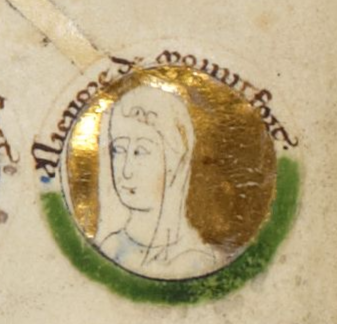
Eleonor de Montfort, wife of Llywelyn ap Gruffydd; Credit – Wikipedia
In 1265, a marriage contract had been concluded for a marriage with Eleonor de Montfort, the daughter of Simon de Montfort, 6th Earl of Leicester and Eleonor of England, the youngest of the five children of King John of England and Isabella of Angoulême. In 1275, Llywelyn ap Gruffudd, Prince of Wales and Eleanor de Montfort were married by proxy. While making her way from France to Wales by ship, Eleonor was captured by agents of her first cousin King Edward I of England. She was held prisoner at Windsor Castle for nearly three years and was finally released in 1278 following the signing of the Treaty of Aberconwy between King Edward I of England and Llywelyn ap Gruffydd, Prince of Wales.
On October 13, 1278, the feast day of Saint Edward the Confessor, King of England, Llywelyn ap Gruffydd, Prince of Wales and Eleonor de Monfort were married in person at Worcester Cathedral in England with King Edward I giving the bride away and paying for the wedding feast. Llywelyn ap Gruffydd and Eleonor had one child, a daughter Gwenllian ferch Llywelyn, also known as Gwenllian of Wales, born at the Palace of Aber Garth Celyn in Gwynedd, Wales. Sadly, Eleonor died due to childbirth complications on June 19, 1282, aged 29 – 30. She was buried at Llanfaes Friary in Llanfaes, Anglesey, Wales which had been founded by Llywelyn the Great, the grandfather of Llywelyn ap Gruffudd, in memory of his wife Joan, Eleanor’s aunt.
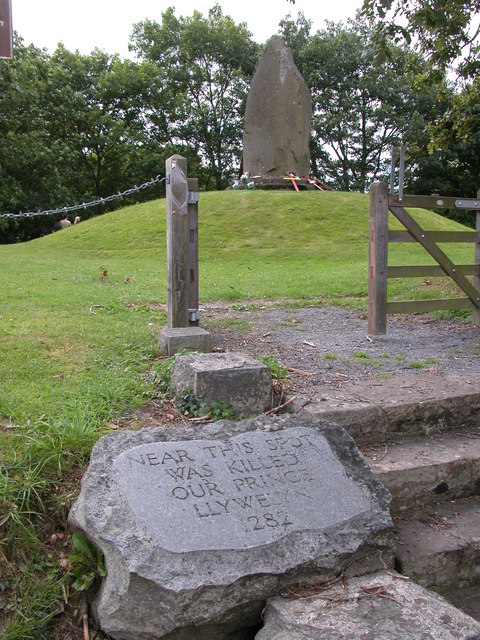
Monument to Llywelyn ap Gruffydd, Prince of Wales in Cilmery, Wales near where he was killed; Credit – By Philip Halling, CC BY-SA 2.0, https://commons.wikimedia.org/w/index.php?curid=11285019
Within nineteen months of Gwenllian’s birth, her father Llywelyn ap Gruffydd and her uncle Dafydd ap Gruffydd were put to death by the English army under King Edward I of England. On December 11, 1282, at the Battle of Orewin Bridge near Builth Wells, Wales, Llywelyn ap Gruffydd, Prince of Wales was one of 3,000 Welshmen killed that day. He was ambushed, horribly murdered, and beheaded. His head was sent to London for public display, and it is thought that the rest of his body was interred at Cwmhir Abbey in Abbeycwmhir, Wales.
Llywelyn ap Gruffydd’s brother Dafydd ap Gruffydd was Prince of Wales from December 11, 1282, until his execution on October 3, 1283 on the orders of King Edward I of England. Dafydd was dragged through the streets of Shrewsbury, England attached to a horse’s tail, then hanged alive, revived, then disemboweled and his entrails burned before him. He was then beheaded and his body was cut into four quarters. Dafydd ap Gruffydd was the first prominent person in recorded history to have been hanged, drawn, and quartered. His head was placed on a pole in the Tower of London near the head of his brother Llywelyn. The days of an independent Wales were over. King Edward I of England had completed a conquest of Wales that resulted in his annexation of the Principality of Wales.
King Edward I of England wanted to make sure that there were no more claimants to the Welsh throne. Llywelyn ap Gruffydd’s infant daughter Gwenllian ferch Llywelyn and Dafydd ap Gruffydd’s young daughter Gwladys ferch Dafydd were confined for life in remote convents in Lincolnshire, England, and never allowed freedom. Gwenllian died in 1337 and Gwladys died circa 1336. Dafydd ap Gruffydd’s two young sons 15-year-old Llywelyn ap Dafydd and 7-year-old Owain ap Dafydd were imprisoned for the rest of their lives at Bristol Castle in England. Much of the time they were kept in cages. Llywelyn died in 1287 while Owain was last reported to be alive in 1325 when he would have been in his fifties.
This article is the intellectual property of Unofficial Royalty and is NOT TO BE COPIED, EDITED, OR POSTED IN ANY FORM ON ANOTHER WEBSITE under any circumstances. It is permissible to use a link that directs to Unofficial Royalty.
Works Cited
- Flantzer, Susan. (2023). Dafydd ap Llywelyn, Prince of Gwynedd. Unofficial Royalty. https://www.unofficialroyalty.com/dafydd-ap-llywelyn-prince-of-gwynedd/
- Gruffydd ap Llywelyn Fawr. geni_family_tree. (2022). https://www.geni.com/people/Gruffydd-ap-Llywelyn-Fawr/6000000006727931003
- Wikimedia Foundation. (2023). Gruffudd ap Llywelyn ap Iorwerth. Wikipedia. https://en.wikipedia.org/wiki/Gruffudd_ap_Llywelyn_ap_Iorwerth
- Wikimedia Foundation. (2023). Llywelyn ap Gruffudd. Wikipedia. https://en.wikipedia.org/wiki/Llywelyn_ap_Gruffudd
- Wikimedia Foundation. (2022). Llywelyn ap Gruffudd. Wikipedia (Welsh). https://cy.wikipedia.org/wiki/Llywelyn_ap_Gruffudd
- Williamson, David. (1996). Brewer’s British Royalty: A Phrase and Fable Dictionary. Cassell.







